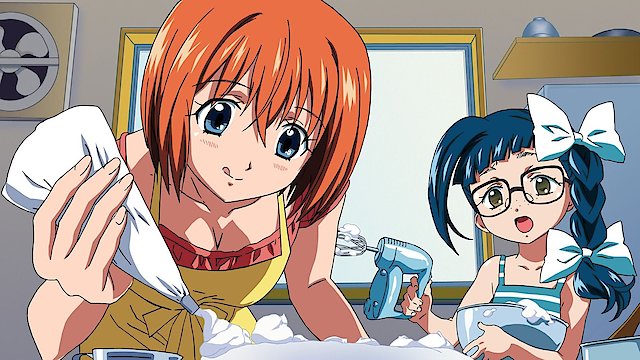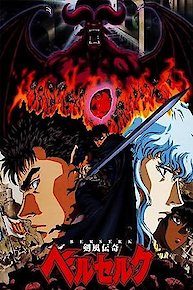
Living for the Day After Tomorrow
Where to Watch Living for the Day After Tomorrow
Watch Living for the Day After Tomorrow Season 1 Episode 12 Now
Watch Living for the Day After Tomorrow Season 1 Episode 11 Now
Watch Living for the Day After Tomorrow Season 1 Episode 10 Now
Watch Living for the Day After Tomorrow Season 1 Episode 9 Now
Watch Living for the Day After Tomorrow Season 1 Episode 8 Now
Watch Living for the Day After Tomorrow Season 1 Episode 7 Now
Watch Living for the Day After Tomorrow Season 1 Episode 6 Now
Watch Living for the Day After Tomorrow Season 1 Episode 5 Now
Watch Living for the Day After Tomorrow Season 1 Episode 4 Now
Watch Living for the Day After Tomorrow Season 1 Episode 3 Now
Watch Living for the Day After Tomorrow Season 1 Episode 2 Now
Watch Living for the Day After Tomorrow Season 1 Episode 1 Now

Living for the Day After Tomorrow, also known as Asatte no Houkou or simply AsaHou, is an intriguing blend of Sci-fi, drama, and romance within the universe of anime that was aired on The Anime Network in 2006. The show consists of 12 episodes, each lasting around 23 minutes, and was based on a manga series of the same name written by J-ta Yamada. It was animated by J.C.Staff, a studio regarded highly in the industry for its quality productions.
At first glance, Living for the Day After Tomorrow appears to take the structure of a typical slice-of-life anime. It is set in a seemingly ordinary world with mundane surroundings. However, it quickly sets itself apart from the archetype by introducing a tantalizing supernatural twist, which dramatically changes the routines of its central characters.
The anime primarily revolves around the lives of Karada Iokawa, an energetic young girl wearing the armor of cheerfulness to deal with her tragic past, and Shoko Nogami, a melancholic adult who is burdened by regrets and sorrows from her previous romantic relationship. Karada, despite her constant smiles, deeply laments being a child and yearns for the responsibilities that adulthood brings. Meanwhile, Shoko wishes to turn back the clock and retrieve the innocence and simplicity of childhood she believes she traded too soon for grown-up complexities. Their perceived wish upon a so-called wishing stone becomes true, which sets up the main premise of the show. Shoko and Karada experience a peculiar body-switch; Karada becomes an adult while Shoko transforms into a child.
This sudden reversal of roles opens up a myriad of situations, both comedic and challenging. The anime treats the body-swap phenomenon with delicacy, realism, and maturity, subtly hinting at the weight of the circumstances. It explores the struggles, confusion, and endeavor of both characters to adapt in their new, suddenly transformed worlds. Both Karada and Shoko embark on an emotional journey mutually helping each other cope with the high stakes their new lives present and learning how to navigate their environments, living for the day after tomorrow.
Featuring this unbelievable twist of fate, the anime is a complex narrative, outlining the poignant yet subtly humorous journey of its characters. It raises pertinent questions about the nature of age, maturity, responsibilities, and the grass always being greener in another age group. Despite its somewhat fantastical premise, Living for the Day After Tomorrow retains a sublime level of relatability for viewers as it dives into the theme of cherishing the present while dealing with the ghosts of the past and anxieties of the future.
In terms of animation and soundtrack, the anime does an excellent job of capturing the mood and tone of the storyline. The overall art style convincingly expresses a sense of serenity and calmness, effectively underlining the extraordinary happening in an ordinary world. The characters are designed with a believable appearance and humane expressions, allowing viewers to form an emotional bond with them. On the other hand, the soundtrack is consistently soothing and atmospheric, leaving a lasting impression that remains with viewers even after they stop watching.
The secondary characters, including Tetsu, Karada's brother, and Amino, a friend, and confidante, also play vital roles in making Living for the Day After Tomorrow an engaging and emotionally deep anime. While on the one hand, the main characters grapple with the shock of the transformation, it's the secondary characters who have an equally challenging task of reconciling with this inexplicable change and providing support to their friends.
In terms of genre, Living for the Day After Tomorrow comfortably straddles the line between fantasy, slice of life, romance, and drama. It offers a truly unique angle on a classic trope we've often seen in popular culture, leading to an engaging storyline and complex, well-drawn characters. It's a story of growth, understanding, and acceptance, retold in a fresh and engaging way.
In conclusion, Living for the Day After Tomorrow is an inventive and bold exposition of the intricate aspects of growing up and aging, wrapped up in a captivating supernatural shell. Its unique portrayal of this universally relatable theme, coupled with likable characters going through extraordinary circumstances, is a must-watch for anime enthusiasts looking for something beyond the standard offerings.
Living for the Day After Tomorrow is a series categorized as a . Spanning 1 seasons with a total of 12 episodes, the show debuted on 2006. The series has earned a moderate reviews from both critics and viewers. The IMDb score stands at 7.0.



































